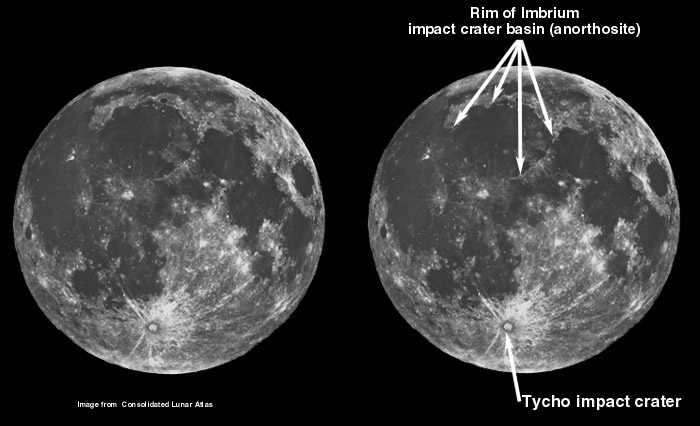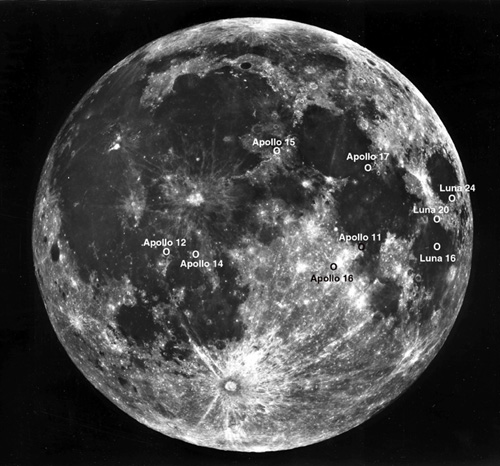
When one looks at the Moon in the night sky, one can see the battered surface that colliding asteroids and comets can produce on a planetary body. The impact craters on its surface are so large they can easily be seen with the naked eye from your own backyard.
These craters are also a testament to the bombardment that our own planet, Earth, has suffered. The Earth-Moon system occupies the same part of our solar system, so the Earth was the target of the same swarm of colliding debris that hit the Moon. On Earth, however, we have other geologic processes that constantly destroy clues about this impact history. Mountain building processes, plate subduction, erosion, volcanism, and other processes cover or consume impact craters. So the record on Earth, limited to ~160 impact craters, is only the surviving trace of the millions of impact cratering events that have affected our planet.
In addition to impact craters, one can look at the Moon and see that it is composed of light-colored and darker-colored material. The light-colored material is in areas of the Moon called the highlands, which represent the earliest crust on the Moon. Impact cratering shattered this crust and often deformed it, pushing some of it into mountain-high impact crater rims or ejecting it across the surface of the Moon. This early crust of the Moon was dominated by a type of rock called anorthosite, which is dominated by the white mineral anorthite or plagioclase.

When the Moon was relatively young, its interior was still molten. Consequently, magma sometimes rose and erupted onto the surface. Because the bottoms of impact basins were often the lowest places on the surface of the Moon, the erupting lava would flow into them and begin to fill them. The lava was similar to the basalt that erupts on Earth and, like on Earth, cooled to form a relatively dark-colored rock. For that reason, some of the largest impact crater basins are outlined by a ring of white mountains (the rim of the crater) and have floors of darker-colored basalt that flooded the craters. Likening the flooding lavas to the seas of Earth, astronomers call the vast plains of basalt mare (singular) or maria (plural) on the Moon.


We have samples of the rock and dust that cover the surface of the Moon. Apollo astronauts with the American space program collected and returned 381.69 kg of samples. The robotic Luna spacecraft built by the Soviet Union also collected and returned 300 g of samples. The Apollo samples and Luna samples were exchanged between scientists in these countries and other countries around the world so that they could begin deciphering the history of the Moon.
Lunar Sample Collection Sites
Samples from a larger part of the Moon also fall to Earth in the form of meteorites. Lunar meteorites are produced when an asteroid or comet hits the Moon and ejects rocky fragments into an orbit that collides with Earth. These meteorites have shown us new things about the Moon and allowed us to test some of the hypotheses developed from the Apollo and Luna missions.
Of course, the Apollo and Luna sample return missions were supported by a much larger number of spacecraft. These include spacecraft in the Ranger program and Surveyor program. The University of Arizona was deeply involved in these lunar exploration missions and provided many of the images and maps that guided the Apollo program, based on photographs taken from ground-based astronomical observatories. These images, now part of the Consolidated Lunar Atlas, the Orthographic Atlas of the Moon, and the Rectified Lunar Atlas, are still an invaluable source of information.



